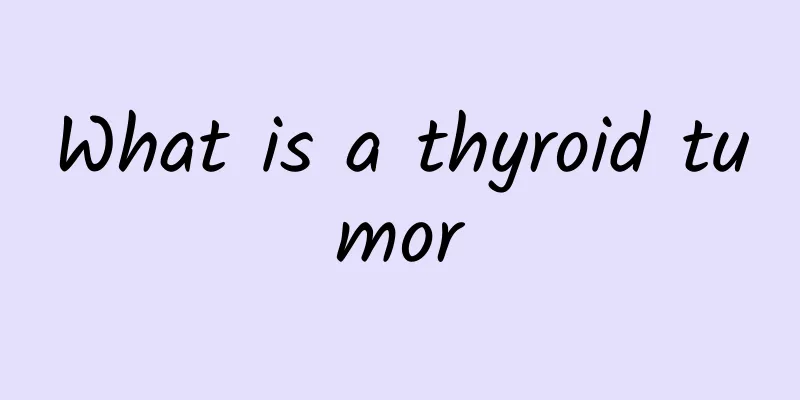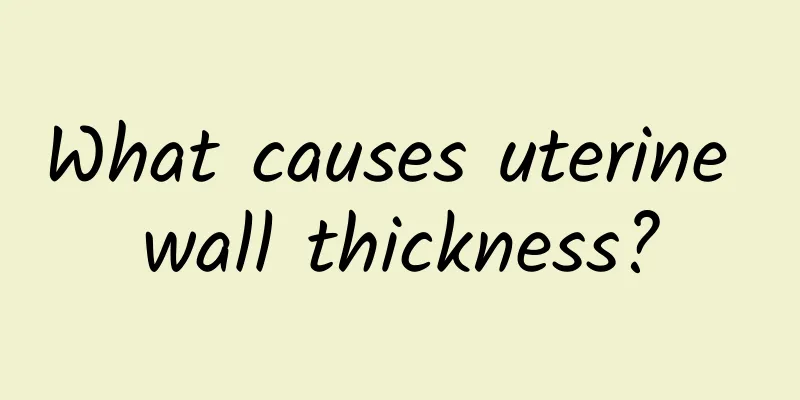What is a thyroid tumor

|
Tumor disease is a disease that endangers the health of modern people. In real life, there are often various tumor diseases that may endanger health. Therefore, for modern people, we should pay special attention to what thyroid tumors are, and then prevent them early in our daily lives so that we can stay away from the nuisance of the disease. Thyroid adenoma is a tumor disease that is harmful to health and has its own characteristics of onset. Therefore, for modern people, it is important to understand what thyroid adenoma is, and then prevent it early in daily life. Even if the disease occurs, it must be responded to in a timely manner so that the tumor can be nipped in the bud. Benign thyroid tumors are very common, accounting for about 50% of neck masses. Generally there are no obvious symptoms. When the tumor is large, it will compress the trachea, esophagus, and nerves and cause symptoms such as difficulty breathing, difficulty swallowing, and hoarseness. When the tumor is combined with bleeding and grows rapidly, it will cause local distension and pain. Because benign thyroid tumors may become malignant, and some of them are benign but appear as "hot nodules" (i.e., highly functional), they require active treatment. Thyroid adenoma Thyroid adenoma (TA) is the most common benign thyroid tumor. It is pathologically divided into follicular thyroid adenoma (FTA) and papillary thyroid adenoma (PTA). The former is the most common, accounting for about 70% to 80% of thyroid adenomas, while the latter is relatively rare and should be differentiated from papillary carcinoma. Adenomas are often surrounded by an intact capsule. The cause is unknown, but it may be related to gender, genetic factors, radiation exposure (mainly external radiation) and long-term overstimulation of TSH. Thyroid adenomas are more common in women under 40 years old. The onset is insidious, with a mass in the neck as the main complaint, which is usually asymptomatic. Those that suddenly increase in size (bleeding) during the course of the disease are often accompanied by local distension and pain. Physical examination revealed nodules in the anterior cervical region, which were mostly solitary, round or oval, often confined to one side of the gland, with a medium texture, smooth surface, no tenderness, and moving up and down with swallowing. If accompanied by cystic changes or bleeding, the nodules will mostly be "hard" due to high tension and may be tender. Color Doppler Flow Imaging (CDFI) showed that the mass had clear boundaries, poor blood supply, and possible cystic changes. Thyroid adenoma may cause hyperthyroidism (incidence of about 20%) and malignant transformation (incidence of about 10%), and should be removed early in principle. Generally, a subtotal thyroidectomy (including the adenoma) should be performed on the affected side. If the adenoma is small, simple adenoma resection can be performed, but it should be wedge-shaped, that is, the adenoma should be surrounded by a small amount of normal thyroid tissue. The resected specimen must be immediately examined by frozen section to determine whether it has malignant transformation. Nodular goiter Nodular goiter (NG) may be caused by iodine deficiency in the diet or deficiency of enzymes involved in the synthesis of thyroid hormones. The disease usually has a long history and often grows gradually without being noticed and is discovered accidentally during a physical examination. Most of them are multinodular, and a few are single nodules. Most nodules are gelatinous, and some of them form cysts due to bleeding and necrosis. In patients with long-term illness, some areas may have more fibrosis or calcification, or even ossification. Thyroid bleeding is often accompanied by a history of sudden pain and cyst-like masses within the gland; those with colloid nodules are hard in texture; those with calcification or ossification are hard in texture. Generally, conservative treatment is suitable, but surgical treatment is required if the nodule is large and produces compression symptoms (dyspnea, dysphagia, or hoarseness), has a tendency to become malignant, or is combined with symptoms of hyperthyroidism. Thyroglossal duct cyst Thyroglossal duct cyst is a congenital malformation related to the development of the thyroid gland. During the embryonic period, the thyroid gland develops at the lower end of the thyroglossal duct, which extends from the floor of the mouth to the neck. The thyroglossal duct usually locks on its own when the fetus is about 6 weeks old. If the thyroglossal duct does not degenerate completely, a congenital cyst may form, which may become a thyroglossal duct fistula after infection and rupture. This disease is more common in children under 15 years old, and the incidence rate in males is twice that in females. It manifests as a round mass with a diameter of 1 to 2 cm in the midline of the anterior neck and below the hyoid bone. The margins are clear, the surface is smooth, it has a cystic feel, and it can move up and down with swallowing or extending or retracting the tongue. Surgical resection is the recommended treatment, which requires removal of a section of the hyoid bone to completely clear the cyst wall or sinus tract, and separation upward to the root of the tongue to prevent recurrence. Subacute thyroiditis Also known as De Quervain's thyroiditis or giant cell thyroiditis. The size of the nodule depends on the extent of the lesion, and the texture is often hard. It is often secondary to upper respiratory tract infection and has a typical medical history, including an acute onset, fever, sore throat, and significant pain and tenderness in the thyroid area. The pain often spreads to the ear and temporal occipital region on the affected side. There is often fever and increased erythrocyte sedimentation rate. In the acute phase, the thyroid gland's 131I uptake rate is reduced, and it often appears as "cold nodules", but serum T3 and T4 are elevated, and the basal metabolic rate is slightly increased. This separation phenomenon is helpful for diagnosis. For mild cases, non-steroidal anti-inflammatory drugs such as aspirin can be used, while more severe cases are often treated with prednisone and dried thyroid preparations. Therefore, when it comes to the question of what thyroid adenoma is, it is important to understand the types of diseases it is related to, and then conduct necessary examinations. It is best to cooperate with the doctor's treatment so that you can truly restore your health and your health will not be affected. Stay away from the troubles of tumor diseases. It is best to seek advice from a professional doctor on treatment methods. |
<<: How to treat chronic glomerulonephritis
>>: What is obsessive compulsive disorder and what are its symptoms
Recommend
What is the reason for being thin and yellowish?
If we do not lead a regular life, our bodies will...
Can I eat green beans while breastfeeding?
Women who are breastfeeding need nutrition at the...
Pulse of kidney deficiency
The human body often has some problems, such as k...
Can Codonopsis and Astragalus be taken together?
Chinese herbal medicine has a certain effect on a...
What is safflower? What are the benefits of safflower foot bath?
Many people know that there are many important bl...
What causes the penis to turn black?
When male friends are young, they are basically t...
Does eating durian help pregnant women to have a healthy baby?
It is very beneficial for pregnant women to eat s...
Where is the Du Meridian?
We often hear doctors say that there is a Du meri...
Can topical ointments be used for bedsores?
Bedsores are a type of blister, ulcer, or gangren...
The effect of Astragalus and Agrimonia
Scutellaria baicalensis is a relatively well-know...
Which is less harmful, medical abortion or surgical abortion?
Nowadays, unexpected pregnancy has become a very ...
What are the effects of sour jujube seeds
As a well-known traditional Chinese medicine for ...
What are the symptoms of a ruptured blood vessel?
Blood vessels are an important part of the human ...
What is the cause of the foreign body sensation in the neck?
In the ENT clinic, we often encounter patients wi...
Is nail delamination caused by onychomycosis?
Nails are closely related to our health. If there...









